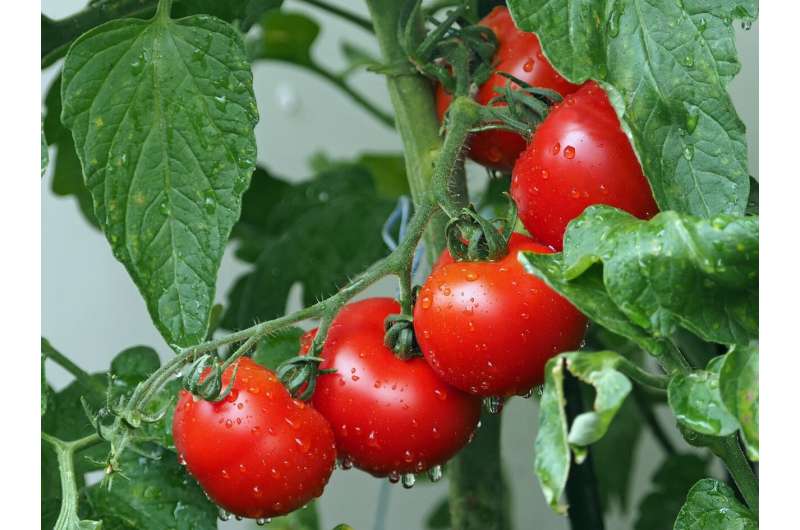This article has been reviewed according to Science X's editorial process and policies. Editors have highlighted the following attributes while ensuring the content's credibility:
fact-checked
trusted source
proofread
Researchers develop new method for precisely quantifying systemin, a plant peptide hormone

In a study published in Plant Communications, Chu Jinfang's team from the Institute of Genetics and Developmental Biology of the Chinese Academy of Sciences (CAS) has proposed a new method for high-accuracy measurement of tomato systemin (TomSys), an important plant peptide hormone. The technology gives biologists a powerful tool to study the TomSys-mediated systemic defense responses and further develop crops with high yield and excellent adaptability.
Results obtained with this proposed new technique also revealed the maturation process and functional mechanism of TomSys during plant systemic defensive responses.
Plant hormones are naturally occurring signaling molecules in the plant kingdom. They can regulate plant development and responses to external environmental stress at very low concentrations. Due to the technical bottleneck for precise quantification of endogenous plant peptide hormone levels, the knowledge of plant small peptide hormones is still very limited compared with the classical small molecule hormones.
TomSys can initiate systemic mobile signals to stimulate an immune response in both wounded and intact leaves. The clarification of TomSy's functional mechanism is expected to pave the way for the development of ideal strains with superior insect resistance and high yield, making it a popular subject in botany studies. Similar to small molecule hormones, the physiological functions of TomSys should be associated with its endogenous levels.
Therefore, it is important to reveal the spatio-temporal dynamic changes of endogenous TomSys levels during the defense process in order to better understand the functional mechanism of TomSys more clearly.
Due to the lack of efficient analysis methods, many questions remain. How does the endogenous level of TomSys change during wound-induced defense responses? Is endogenous TomSys mobile and does it play a role in systemic defense responses? Is Leu-systemin (Leu-Sys) the major synthetic precursor of TomSys predicted by researchers, a naturally occurring biomolecule in plants?
The Plant Hormone Analysis Platform has long been dedicated to the development of efficient and highly sensitive analytical methods for the quantification of plant hormones. To date, the methods established by the platform have been widely used in research, which has greatly contributed to the achievement of high-level original results in related fields in China.
To solve the problem of TomSys self-oxidation, the researchers introduced a controlled oxidation strategy according to the physicochemical properties of TomSys. Meanwhile, an efficient purification and enrichment method combined with LC-MS/MS technology was developed to provide a highly efficient analytical method for TomSys quantification. Using the proposed novel method, endogenous TomSys can be quantified in only 100 mg of tomato leaves.
On this basis, Leu-Sys, a critical precursor of TomSys predicted by scientists, was identified in tomato leaves. The natural occurrence of Leu-Sys at the endogenous level was verified for the first time. The identification of endogenous Leu-Sys could provide direct evidence for biologists' speculation on the release of TomSys from ProSys via Leu-Sys, which will be very helpful in understanding the release mechanism of TomSys.
Meanwhile, the established analytical method was used to monitor the dynamic changes of TomSys and jasmonic acid (JA) levels in response to wounding. It was shown that the accumulation of endogenous TomSys was found not only in locally wounded tomato leaves but also in systemically intact leaves. These findings are useful for elucidating the roles of TomSys and JA in plant systemic defense responses.
More information: Jijun Yan et al, A sensitive and accurate method for quantifying endogenous systemin levels and verifying natural occurrence of Leu-systemin, Plant Communications (2023). DOI: 10.1016/j.xplc.2023.100638
Provided by Chinese Academy of Sciences




















